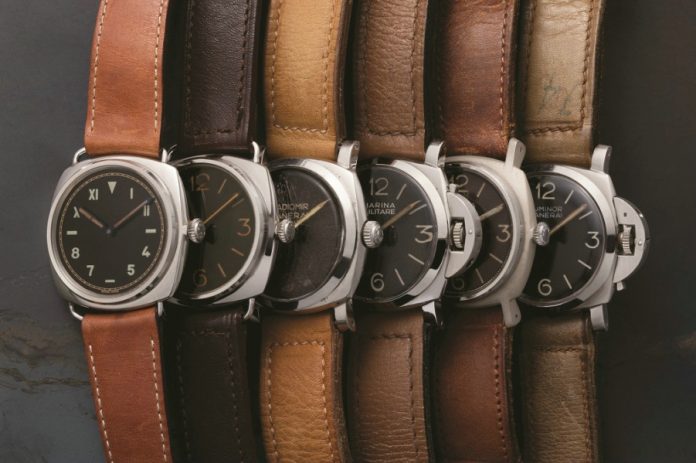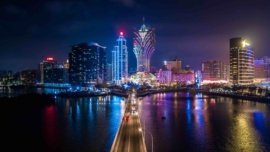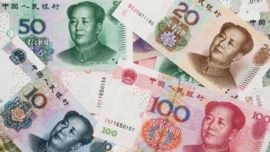Its distinctive style and apparent simplicity has for many years attracted an enviable number of admirers and collectors while the rarer pieces attract considerable interest at auctions where they fetch dizzying prices. In the world of luxury timepieces, where the brands that stand out are of Swiss, French or German origin, Panerai is an ambassador for Italy.
By César Brigante

Italian-born Giovanni Panerai was the man behind what is today one of the most resounding names in watchmaking. After spending years learning the craft in Germany, France, England and Switzerland, he returned to Florence hoping to open his own business. And so, in the city where science flourished during the Renaissance, the watchmaker opened his small studio in 1860, on Ponte alle Grazie.
In the following years, with his son Leon Francesco already involved in the business and, later, his firstborn grandson Guido, the atelier gained considerable recognition. The maison, which had specialised in assembling watch parts from different suppliers, as was common practice then, had a vast catalogue with both high-end and more affordable pieces, sold separately or in bulk to other establishments across Italy.

During its first decades, Orologeria G. Panerai & C., as it was named at the time, had several addresses. Eventually, in 1920, the brand settled in its iconic shop on Piazza San Giovanni, which still stands today. The move made the Panerai family company one of Florence’s most prestigious shops, popular among the wealthier who would purchase pieces from the most renowned names in Swiss watchmaking, such as Rolex, Vacheron Constantin, Ulysse Nardin, Jaeger-LeCoultre and even Patek Philippe, among many others. This strategy led the company to adopt a more suggestive name, Orologeria Svizzera.
Interestingly, the maison owes its future to a relationship that predated the shop’s opening, when, around 1915, Guido Panerai signed a deal with the Italian Royal Navy to supply several precision instruments whose main purpose was to improve visibility in the dark. For this, the brand developed a highly innovative substance named Radiomir — a luminous paste made from radium bromide that allowed users to read the dials in the dark. This partnership led to the opening of a separate company named Officina Meccanica di Precisione G. Panerai, which registered several patents and produced a vast number of devices, such as depth gauges, wrist-compasses, torpedo timers and even underwater lanterns.

The most significant contribution to the brand’s future from this collaboration was the Radiomir watch. Commissioned to equip frogmen of commando submarines, this piece could withstand the most adverse conditions, maintain precision and was also easy to read. The first prototype was presented in 1936 and, two years later, a second version was developed, a closer model to the Radiomir we know today and which has since been subjected to many changes to improve its performance. In 1943, the Italian icon also released the Mare Nostrum for navy deck officers, of which very few watches were ever produced.
In 1949, Panerai unveiled a new substance, patented under the name Luminor, which was bright and did not use radiation (unlike Radiomir). With an added crown-guard system in the late 1950s, which was also patented, the Luminor’s transformation was complete, and it became the manufacturer’s second flagship model, equipped with Angelus 240 or Rolex 618 calibres.



The end of the war and the new economic reality led to a decline in navy commissions — it is estimated that, between 1960 and 1990, less than 300 watches were produced, making these timepieces extremely rare and, consequently, leading to exorbitant prices at auctions.
Following the death of Guido Panerai in 1972, Dino Zei took the helm at the company. This industrial engineer and navy officer had worked with Guido for some time and was familiar with the inner workings of the business while the family controlled Orologeria Svizzera. Under his command, the company name changed once again, this time to Officine Panerai S.r.L. It was only in 1993, the begging of the pre-Vendôme era, as the brand describes it, that a new collection was released — a limited edition comprising Luminor, Luminor Marina and Mare Nostrum models, which was a resounding commercial success.
In the mid-1990s, Panerai, which was still fairly unknown — after all, the contracts with the Italian navy were secret — came into the spotlight when actor Sylvester Stallone bought a watch and became a fan of the brand. Before he started shooting for Daylight, the actor requested a watch he could use during filming, which had many underwater scenes. After debuting on the silver screen, Panerai became unexpectedly famous, however, financial struggles — courtesy of a weak economic capability and a few wrong decisions — forced the company to seek out new partners or eventual buyers.

Thanks in part to the cult status the brand already benefited from at the time and the potential it carried from its long history, luxury group Vendôme (which would later become the current Richmond Group) took an interest in the Italian icon and bought it in 1997. A strong investment, highly professional management and a well-oiled marketing machine soon took Panerai to new heights. Ushering in the rebirth of horlogerie, the brand benefitted from an incredible surge in popularity and released new models for the Luminor and Mare Nostrum.
From a virtually unknown brand, Panerai ascended to the global market, leading to what some refer to as “Paneraimania”. At the same time, Orologeria Svizzera was also acquired from the family and, in 2002 the brand inaugurated the Neuchâtel manufacture, in Switzerland, and its first Asian boutique, in Hong Kong. Three years later, the company’s first move in the Swiss town was made — the P.2002, a hand-wound calibre with power reserve for eight days and GMT function. Since then, seven new calibres were released and a new manufacture opened in 2014.
Simultaneously, the brand developed an intense sponsorship policy which helped it connect with explorers working in hostile conditions, putting its watches to the test. However, the sea is still Panerai’s favourite muse. Angelo Bonati, the company’s charismatic CEO for many years and a sailing enthusiast, supported the restoration of the Eilean yacht, a Bermudian ketch built in 1936, which the brand uses in several classic regattas and its own race, the Panerai Classic Yachts Challenge.
It is safe to say that Panerai is enjoying a golden age that its founder could never have predicted 150 years ago. While many aspects have contributed to the company’s long life and great success, there are a few which stand out: loyalty to the brand’s DNA, the Italian style it embodies and the connection to Florence, which it has always fostered.

































